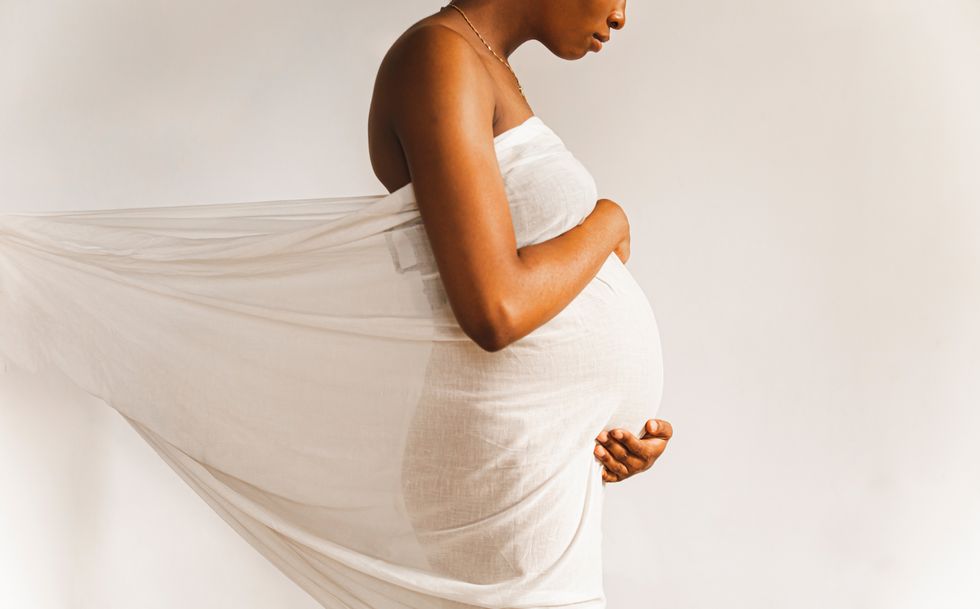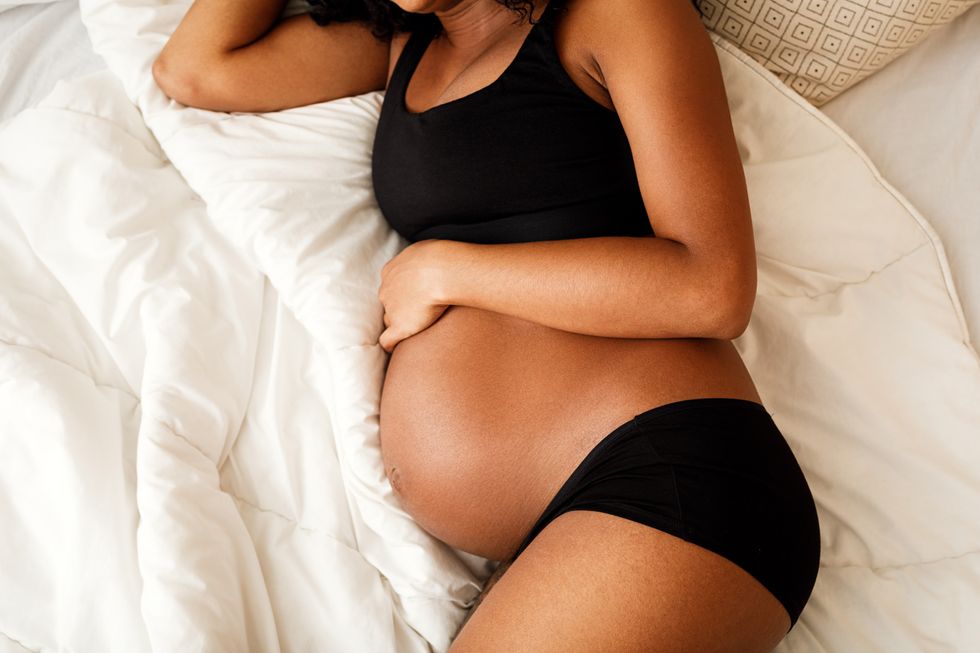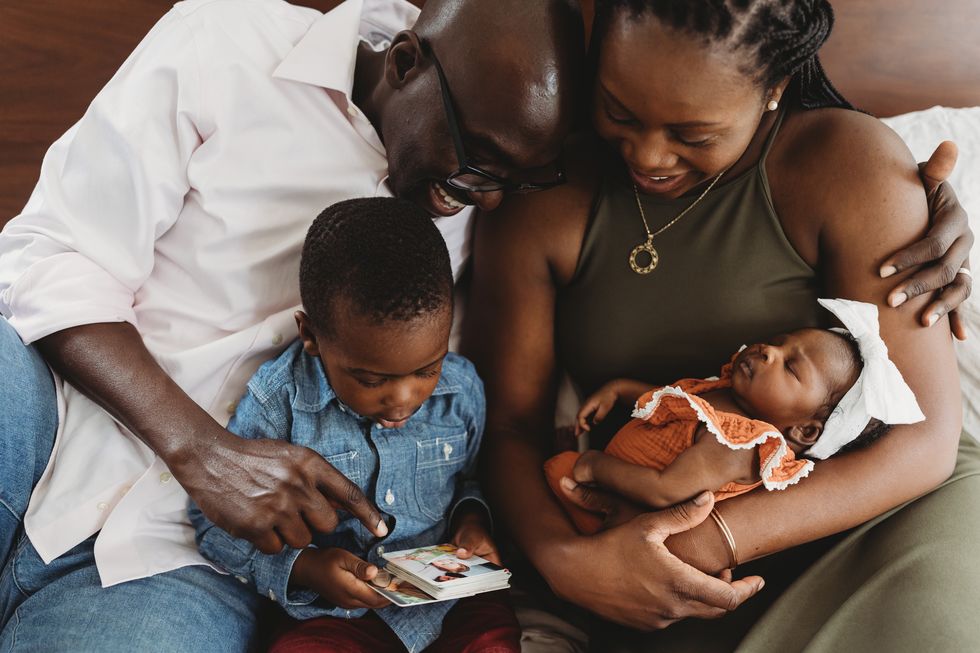The original post is located at www.elle.com
“You look preeclamptic,” my friend told me as I greeted her. I was 34 weeks pregnant, and it had been a rough pregnancy. Between the demands of my job as a hand surgeon and mother to a toddler, preeclampsia was the last thing I wanted to worry about. I already had a period of bedrest for preterm labor at 28 weeks, and I had just left the dentist after getting an infected tooth pulled. Pregnancy is hard, I told myself, and simply put, I was tired.
However, this friend, Dr. Kateena Addae-Konadu, is a perinatologist (a high-risk pregnancy obstetrician). I responded, “You’re seeing the swelling from me being in the dentist’s chair for the last hour,” but her words stuck with me. I checked my blood pressure when I got home: 156/86. As a physician, I knew this was high, particularly since my blood pressure before pregnancy was in the 90’s systolic. “It’s just pain-related,” I thought to myself, and as my pressures fell back into the 140s over the next 24 hours, I worried less.
According to The American College of Obstetricians and Gynecologists (ACOG), preeclampsia is “a serious disorder that can affect all the organs in your body. It usually develops after 20 weeks of pregnancy, often in the third trimester.” I had heard the term preeclampsia and studied it in medical school, but I put it to the back of my mind because I w as not at high risk for it. The high-risk category includes previous preeclampsia, carrying multiples, chronic hypertension, diabetes mellitus, and kidney disease.
We’ve heard famous women, including Beyoncé, Serena Williams, and Kim Kardashian, publicly discuss their concerning experiences with preeclampsia. I did not realize that as a 35+ year old Black woman, despite being in overall good health, I was already at moderate risk simply because of my age and race. According to the Agency for Healthcare Research and Quality, African-American women are 60% more likely to suffer from preeclampsia than white women. My first signs were the swelling I developed in my second trimester. I dismissed these as typical swelling of pregnancy, but there were multiple signs: The rounding of my face. My glove size increased from medium to large, and my operative glove size from 7.5 to 8.5. My husband inquired why my lips were so swollen one morning. This was all before my blood pressure began to rise.
During my 36th week of pregnancy, more symptoms began to develop. During this week, I felt even more worn out than in previous weeks. I checked my blood pressure: 146/84. Because it was high, I texted my OB, Dr. Aisha Redmond, who quickly asked about other symptoms. Other signs of preeclampsia include headache, changes in eyesight, pain in the upper abdomen or shoulder, nausea and vomiting in the second half of pregnancy, sudden weight gain, and difficulty breathing. The slight “hunger headache” was a sign of preeclampsia given my high blood pressure, and that’s why it had not resolved when I ate lunch. I had worse headaches earlier during pregnancy, but my OB took this one seriously. She ordered me to the office for labwork and then straight to the hospital for further assessment. They drew my blood and checked my urine. In hindsight, I should have notified her of the high blood pressures I had been recording at home. They had all been normal in the office, but the at-home readings put me in the category of gestational hypertension, which is having high blood pressure only during pregnancy.
I decided to start my maternity leave as I drove to the hospital at 36 weeks and 2 days. My labs began to return, and they were normal. I was monitored for a few hours as technically I did not meet the severe preeclampsia blood pressure cutoff (systolic pressure of 160 mmHg or a diastolic pressure of 110 mmHg). I was diagnosed with gestational hypertension until my only abnormal lab result: protein/creatinine of 0.4 (normal is ≤ 0.3 in pregnancy). This showed protein in my urine, a sign of kidney damage, giving me the diagnosis of preeclampsia. The OB on call assessed me but let me go home once I revealed that my headache had resolved. I was not yet at 37 weeks, and the plan would be to induce me at that point if I remained stable. I was placed on home monitoring but continued to feel weak. I just wanted to make it to 37 weeks.
At 36 weeks and 4 days, Kateena called to check in on me as I laid in the bed at home. My mild headache had returned and when she asked about vision changes, I understood that my screen aversion was a symptom. I was having trouble looking at screens and had turned off both the television and my cell phone. Kateena immediately sent me to the hospital and shared things she had seen with the most severe preeclampsia over the years: stroke, blindness, seizure, and fetal death. I texted Dr. Redmond who told me she was at the hospital and would be waiting to start induction. I pulled my husband out of his work video meeting to head to the hospital.
As we drove, he noticed the tears silently running down my face. I rarely cry. He now perceived the gravity of my condition and my concern for our daughter. My labwork showed that my protein/creatinine ratio had risen to 0.6. It was time. Luckily, I went on to have an uneventful induction and delivery. My beautiful baby girl was born at 36 weeks and 4 days. I was placed on magnesium to prevent seizures while in the hospital and continued on home blood pressure monitoring. I took blood pressure medication for a month, only stopping once my pressures normalized. Still, I am at risk of developing chronic hypertension in the future.
As I reflect upon my pregnancy, I’m thankful for my excellent team and that things ended well. I also recognize the privileges I had are not widely available. Very few have the luxury of a perinatologist and an attentive OB on standby during their pregnancy. Not many also have a group of obstetricians that they call dear friends. I hope my experience helps to highlight some subtle symptoms of preeclampsia and how easy they can be to dismiss.
My advice to any pregnant person is to review the signs and symptoms of preeclampsia. Discuss your risk status with your obstetrician. If you are at risk of preeclampsia, have a blood pressure cuff at home. Review whether to take low-dose aspirin during pregnancy with your obstetrician. There is evidence for Black women over 35 to be considered for aspirin during pregnancy. As pregnancy progresses, bring up any concerning symptoms, and remember that each symptom has a wide range of manifestations. Don’t dismiss the small signs. We can’t prevent all diagnoses of preeclampsia, but by recognizing the early warnings, we can reduce the harmful effects.











